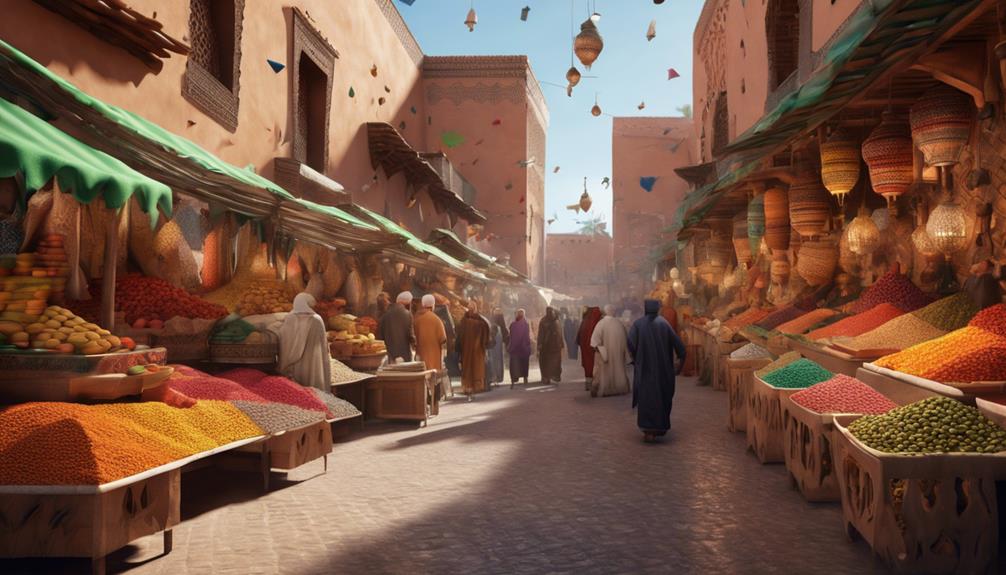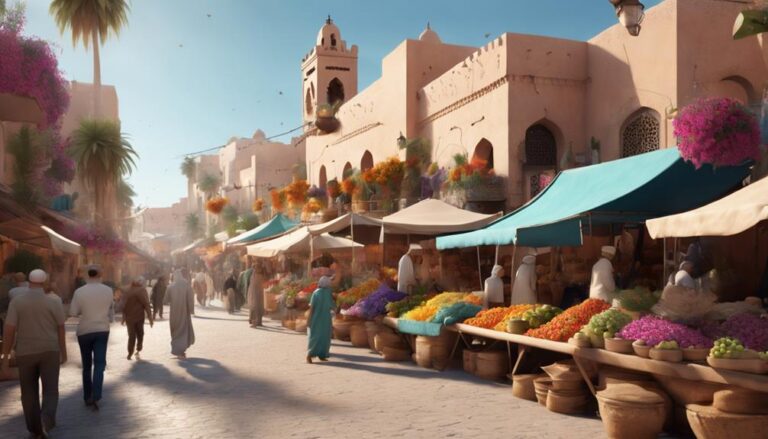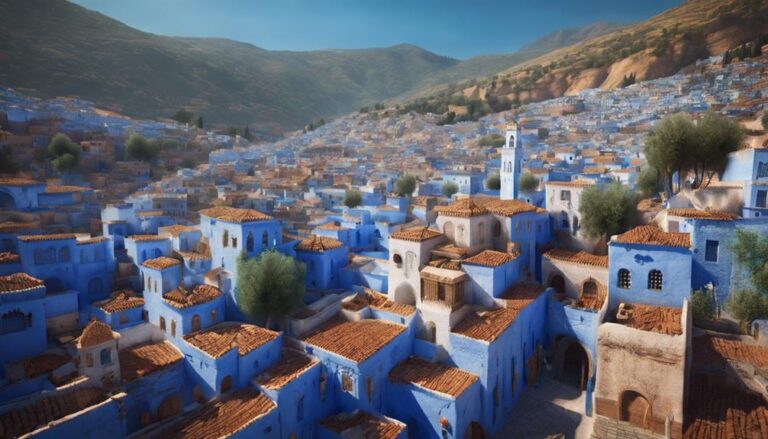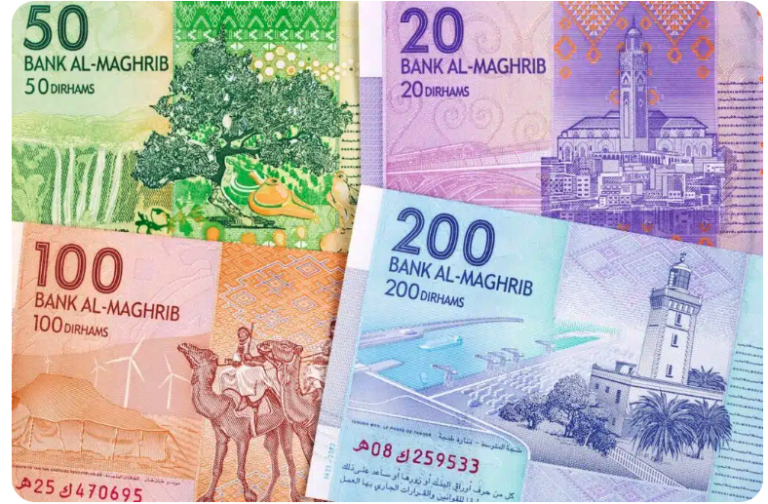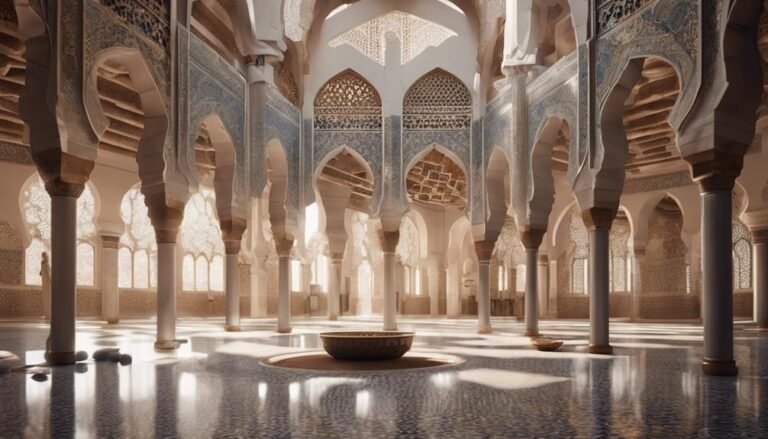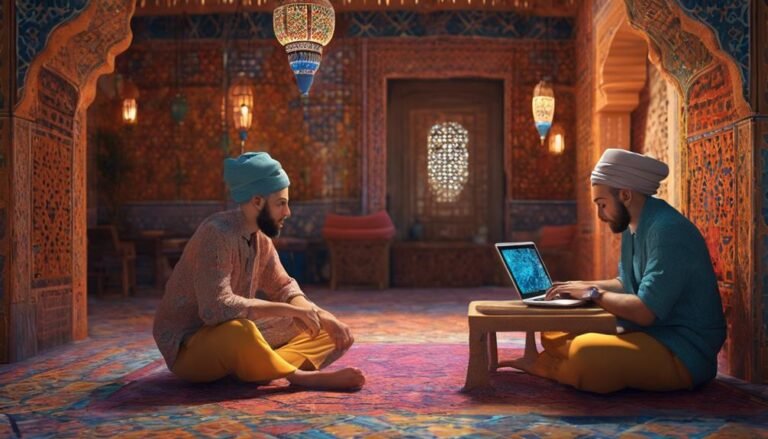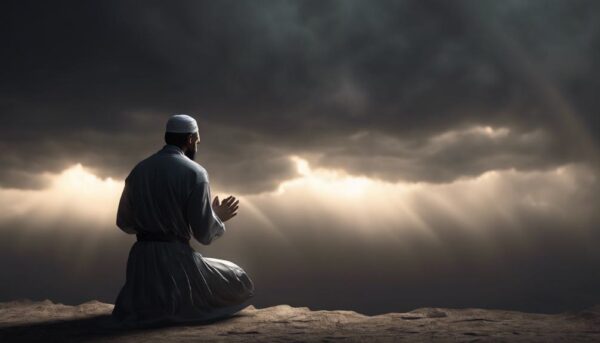You might think Morocco is unsafe, but did you know about its diverse landscapes, like the Atlas Mountains and Sahara Desert? Misconceptions linger about communication hurdles, yet the country boasts a mix of languages and cultural norms. Women's rights? Morocco's progressing with laws and evolving perceptions. Safety concerns ease with local awareness and traditional customs. When it comes to food, you'd be surprised by the delectable tagines and aromatic mint tea. These revelations about Morocco may challenge your preconceptions and invite you to explore more about this multifaceted country.
Key Takeaways
- Not all Moroccans live in the desert; diverse landscapes include mountains and oases.
- Arabic is not the only language spoken; French is dominant in urban areas.
- Women in Morocco have legal rights and are making strides in education, workforce, and politics.
- Safety measures are essential, but not all women face constant danger; community support is crucial.
- Moroccan cuisine is not just spicy; it includes a variety of flavorful dishes like tagine and couscous.
Diversity of Landscapes
Have you ever explored the breathtaking diversity of landscapes that Morocco has to offer? From the snow-capped peaks of the Atlas Mountains to the golden sands of the Sahara Desert, Morocco boasts an incredible geographic variety that will leave you in awe. The country's landscapes not only showcase its natural beauty but also its cultural richness.
In Morocco, you can wander through lush oases, stand in awe of towering cliffs, and meander through vibrant markets bustling with life. Each region offers a unique glimpse into the country's diverse terrain, reflecting the geographic variety that makes Morocco so enchanting.
The cultural richness of Morocco is intricately woven into its landscapes. From the ancient medinas of cities like Marrakech and Fes to the traditional Berber villages nestled in the mountains, each place tells a story of the country's history and heritage. The fusion of diverse landscapes and cultural influences creates a tapestry of beauty that's truly unparalleled.
Language and Communication
As you traverse the diverse landscapes of Morocco, have you considered the linguistic tapestry that adds a unique layer to your exploration? Language and communication in Morocco are fascinating aspects that can both enrich and sometimes challenge your experience. The country is a blend of Arabic, Berber, French, and Spanish influences, creating a rich tapestry of languages. This diversity reflects the country's history and cultural complexity, offering you a glimpse into the multifaceted identity of Morocco.
| Cultural barriers | Language difficulties |
|---|---|
| Diverse cultural norms | Arabic dialect variations |
| Religious sensitivities | Limited English proficiency |
| Gestures and body language | French dominance in cities |
| Traditional greetings | Berber language in rural areas |
Navigating through these linguistic intricacies can sometimes pose challenges, especially in more remote or rural areas where English may not be widely spoken. However, embracing these differences can lead to meaningful interactions and a deeper understanding of the local way of life. So, as you engage with the people of Morocco, let the language guide you through this enthralling journey.
Womens Rights and Status
Exploring the intricacies of women's rights and status in Morocco reveals a complex landscape shaped by cultural norms and societal dynamics. How does gender equality manifest in a society where traditions and expectations play a significant role in shaping women's lives? Let's investigate further into this topic to understand the nuances surrounding women's rights in Morocco.
- Legal Framework: Morocco has made strides in improving women's rights through legal reforms, such as the 2004 Family Code. How have these changes impacted women's status in society?
- Education: How does access to education influence women's empowerment and their roles within Moroccan families and communities?
- Workforce Participation: What cultural factors influence women's participation in the workforce, and how does this impact their economic independence and societal status?
- Political Representation: In what ways are women represented in Moroccan politics, and what barriers do they face in achieving equal representation?
- Social Perceptions: How do cultural norms shape societal perceptions of women's roles and rights, and what challenges do women face in understanding these expectations?
Understanding the intersections of gender equality and cultural norms is essential to grasp the complexities of women's rights in Morocco.
Safety and Security Measures
What safety and security measures are in place to protect women in Morocco?
When it comes to safety and security for women in Morocco, there are several cultural customs and local customs that play a significant role. In public spaces, it's common for women to travel in groups or pairs for added safety. This practice isn't only a cultural norm but also a way to look out for one another. Additionally, many areas in Morocco have a strong sense of community where neighbors watch out for each other, creating a supportive environment.
When exploring the bustling markets or maneuvering through the winding streets of Moroccan cities, it's advisable to dress modestly to respect local customs and avoid unwanted attention. Women travelers are encouraged to dress conservatively by covering their shoulders and knees, which aligns with the cultural norms in Morocco. Being aware of and respecting these customs can contribute to a more comfortable and secure experience while traveling in this vibrant country.
Traditional Moroccan Cuisine
To truly immerse yourself in the rich tapestry of Moroccan culture, one must savor the diverse flavors and aromas of traditional Moroccan cuisine. Have you ever wondered how spices and flavors play an essential role in creating the unique taste of Moroccan dishes? The cooking techniques used in Moroccan cuisine are a blend of tradition and innovation, resulting in dishes that are both comforting and exciting.
Let's explore further into the world of traditional Moroccan cuisine:
- Tagine: Discover the art of slow-cooked stews that blend savory meats with sweet fruits and a myriad of spices.
- Couscous: Uncover the delicate balance of fluffy couscous paired with richly flavored vegetables, meats, or fish.
- Harira: Taste the hearty tomato-based soup with chickpeas, lentils, and a burst of Mediterranean flavors.
- Mint Tea: Experience the invigorating and aromatic Moroccan mint tea, a symbol of hospitality and friendship.
- Pastilla: Indulge in the savory-sweet layers of flaky pastry filled with spiced meat, nuts, and a hint of powdered sugar.
Embark on a culinary journey through the vibrant and complex world of traditional Moroccan cuisine.
Conclusion
So, next time someone tells you Morocco is just a desert country, you can confidently correct them. With its diverse landscapes, rich culture, and delicious cuisine, Morocco offers so much more than meets the eye.
Take Sarah, for example. She traveled to Morocco expecting only sand dunes, but was pleasantly surprised by the lush forests, vibrant cities, and warm hospitality she encountered.
Don't let misconceptions hold you back from experiencing all that Morocco has to offer!

The Editorial Team is a passionate group of Morocco enthusiasts dedicated to sharing the beauty, culture, and wonders of this captivating country. With diverse backgrounds and a deep love for travel, we strive to bring you engaging and informative content that inspires your Moroccan adventures. From uncovering hidden gems and sharing local insights to exploring mouthwatering cuisine and showcasing the vibrant lifestyle, our team is committed to providing you with valuable resources and exciting stories that enhance your exploration of Morocco. Join us on this journey as we celebrate the rich heritage and unforgettable experiences that make Morocco truly special.

